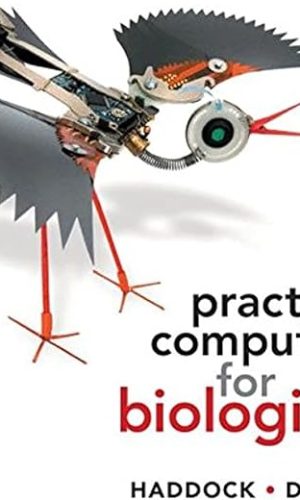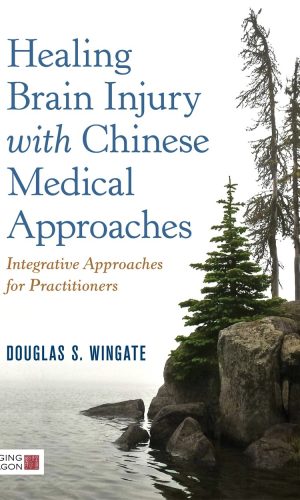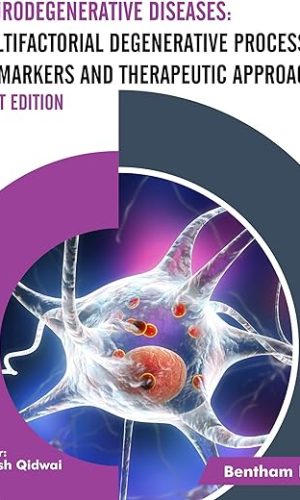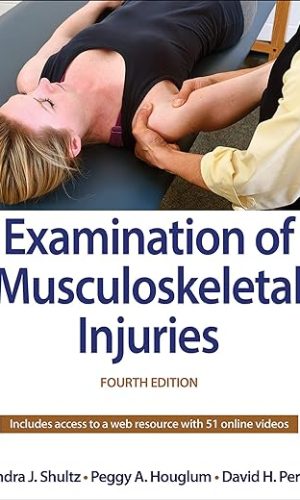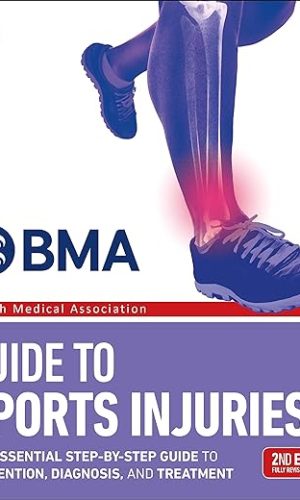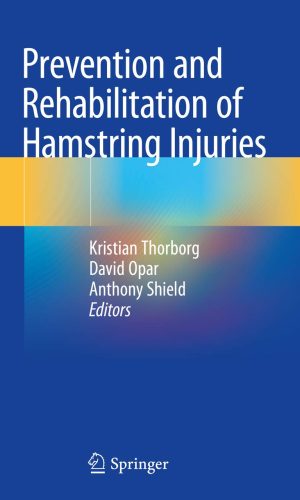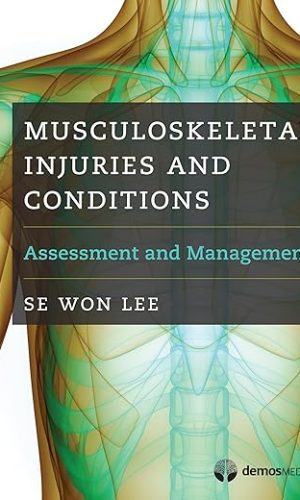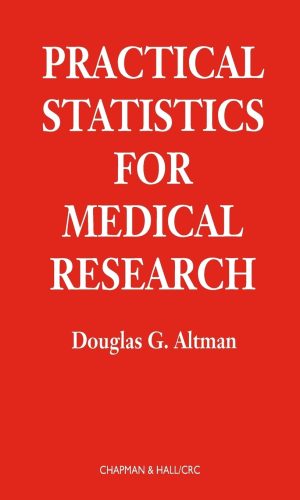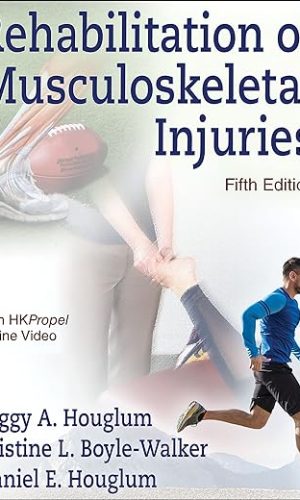Medicine
-
Evolution in Health and Disease
In this fully revised and updated edition, the editors have integrated a completely new set of contributions from the leading researchers in the field to describe the latest research in evolutionary medicine, providing a fresh summary of this rapidly expanding field 10 years after its predecessor was first compiled. It continues to adopt a broad approach to the subject, drawing on medically relevant research from evolutionary genetics, human behavioral ecology, evolutionary microbiology (especially experimental evolution of virulence and resistance), the evolution of aging and degenerative disease, and other aspects of biology or medicine where evolutionary approaches make important contributions. Evolution in Health and Disease describes how evolutionary thinking gives valuable insights and fresh perspectives into human health and disease, establishing evolutionary biology as an essential complementary science for medicine. Integrating evolutionary thought into medical research and practice helps to explain the origins of many medical conditions, including diabetes, obesity, cardiovascular disease, asthma, allergies, other autoimmune diseases, and aging. It also provides life-saving insights into the evolutionary responses of pathogens to antibiotics, vaccinations, and other human interventions. Why do we grow old? How can we stay healthy as we age? The book discusses these and many other fascinating questions, as well as suggesting exciting possibilities for future treatment and research. This research level text is suitable for graduate level students and researchers in the fields of evolutionary (Darwinian) medicine, evolutionary biology, anthropology, developmental biology and genetics. It will also be of relevance and use to medical researchers and doctors.Read more
£50.40 -
Practical Computing for Biologists
Practical Computing for Biologists shows you how to use many freely available computing tools to work more powerfully and effectively. The book was born out of the authors’ own experience in developing tools for their research and helping other biologists with their computational problems. Many of the techniques are relevant to molecular bioinformatics but the scope of the book is much broader, covering topics and techniques that are applicable to a range of scientific endeavours.
Twenty-two chapters organized into six parts address the following topics (and more; see Contents):Searching with regular expressions
The Unix command line
Python programming and debugging
Creating and editing graphics
Databases
Performing analyses on remote servers
Working with electronicsWhile the main narrative focuses on Mac OS X, most of the concepts and examples apply to any operating system. Where there are differences for Windows and Linux users, parallel instructions are provided in the margin and in an appendix. The book is designed to be used as a self-guided resource for researchers, a companion book in a course, or as a primary textbook. Practical Computing for Biologists will free you from the most frustrating and time-consuming aspects of data processing so you can focus on the pleasures of scientific inquiry.
Read more
£51.30 -
Healing Brain Injury with Chinese Medical Approaches: Integrative Approaches for Practitioners
Learn to treat symptoms of traumatic and acquired brain injury using Chinese medicinal methods of acupuncture and herbal medicine. Covering both Western and Chinese medicine understandings of the brain, the book provides a thorough exploration of treatment options, including multiple acupuncture systems, Chinese herbal formulas, dietary and orthomolecular recommendations, and standard biomedical approaches.
Many symptoms associated with brain injury can be effectively addressed or reduced using TCM, including chronic headache, fatigue, dizziness, pain, and anxiety among others. The book highlights the special considerations that should be taken when working with people with brain injury, as well as when treating particular subpopulations, including pediatrics and veterans.
Read more
£52.20 -
Neurodegenerative Diseases: Multifactorial Degenerative Processes, Biomarkers and Therapeutic Approaches (First Edition)
This reference is the definitive guide to common neurodegenerative diseases that affect humans. The book covers mechanisms of some of the most well-known neurodegenerative diseases, their biomarkers, neuropharmacology, and emerging treatment strategies.The book introduces the subject of neurodegeneration by outlining the biochemistry, pathophysiology and multifactorial neurological mechanisms (the role of genetics, environmental factors and mitochondrial damage, for example). Next, it explains some of the most studied diseases, namely, Parkinson’s Disease, Alzheimer’s Disease, Huntington’s Disease, and Multiple Sclerosis. Subsequent chapters delve into current knowledge about diagnostic and immunological biomarkers, followed by a summary of novel therapeutic strategies.
Special attention has been given to the role of medicinal plants in attempting to treat neurodegenerative diseases, as well as the public health burden posed by these conditions.
Key Features
– give readers an overview of multifactorial disease mechanisms in neurodegeneration
– covers some major neurodegenerative diseases in detail
– covers diagnostic and immunological biomarkers
– explores current therapeutic strategies and drug targets in common neurodegenerative diseases
– offers a simple presentation with references for advanced readers
The book is a suitable reference for all readers, including students, research scholars, and physicians who are interested in the mechanisms and treatment of neurodegenerative diseases.
Read more
£65.50 -
Examination of Musculoskeletal Injuries
Examination of Musculoskeletal Injuries, Fourth Edition, guides current and future athletic trainers and rehabilitation professionals through the examination and evaluation of musculoskeletal injuries both on and off the field. The text presents injury examination strategies in on-site, acute, and clinical settings and provides the information on mastering the skills needed for the Board of Certification examination for athletic trainers as determined by the sixth edition of Athletic Training Role Delineation Study/ Practice Analysis for entry-level athletic trainers.This updated fourth edition includes the following enhancements:
- A new online video library contains 51 short video clips that correspond to and demonstrate evaluation techniques for various musculoskeletal disorders found throughout the text.
- Full-color photos and medical artwork have been added throughout the text to clarify testing techniques and enhance knowledge of relevant body structures.
- Substantial updates provide the most recent evidence-based clinical information.
- An expanded selection of special tests and injury-specific examinations are now presented in a more accessible format and include a photo or video, description of the purpose, patient and clinician positions for the test, procedures performed, and possible outcomes.
To assist students, a web resource houses the robust video library and printable checklists forms, and tables that students can use in laboratory work and review sessions. Instructor ancillaries are also available online.
Read more
£66.50 -
BMA Guide to Sports Injuries: The Essential Step-by-Step Guide to Prevention, Diagnosis, and Treatment (DK Medical Care Guides)
This one-stop manual for treating and preventing sports injuries covers everything you need to know, including first aid and physiotherapy.
Produced in collaboration with the British Medical Association, this fully illustrated sports injury manual ensures reliable, up-to-date information. Discover what’s causing your knee pain or shoulder pain using the directory of common sports injuries, which outlines causes, symptoms, and diagnoses. Speed your recovery from injuries such as a sprained ankle, bone fracture, or pulled groin using more than 160 step-by-step exercise routines designed to provide immediate treatment as well as long-term strategies for injury prevention. Easy to use, packed with practical advice, and covering all sports from snowboarding to tennis, this is the indispensable injury manual for all amateur sports people, coaches, and trainers.Read more
£69.50 -
Prevention and Rehabilitation of Hamstring Injuries
This innovative book presents the latest insights into hamstring strain injuries (HSI), one of the most common problems in elite and recreational sport, with a unique focus on prevention and rehabilitation. The research within this area has evolved rapidly over the past 10 years and this text offers a comprehensive overview of the recent and most relevant advances. It fills a gap in the literature, since other books focus on muscle injuries in general and their surgical treatment.Structured around the current evidence in the field, it includes sections on functional anatomy and biomechanics; basic muscle physiology in relation to injury and repair; assessment of risk factors; and factors associated with hamstring strains. It also discusses considerations in relation to acute and chronic injuries and hamstring injury prevention, including pre-season and in-season interventions, as well as management strategies and rehabilitation protocols. The final chapter is devoted to additional interventions when conservative rehabilitation and injury prevention fail. Written by renowned experts in the field, this book will be of great interest to sports physiotherapists, sports physicians, physical trainers and coaches.Read more
£70.80 -
Biomechanics of Injury
Biomechanics of Injury, Third Edition, explains the biomechanical principles of injury and how injuries affect the normal function of human anatomy. With a clear, accessible writing style and nearly 400 full-color photos and anatomy illustrations, it guides readers through the mechanical concepts of injuries without a heavy emphasis on mathematics.Previously titled Biomechanics of Musculoskeletal Injury, this third edition expands coverage of injuries beyond those of the musculoskeletal system to include the head, neck, and spine. Joining noted biomechanists Ronald Zernicke and William Whiting is concussion expert and athletic trainer Steven Broglio, who offers insights on head trauma and other neurological injuries. Unique in its evaluation of and appreciation for the intricacies of injury mechanisms, Biomechanics of Injury, Third Edition, comprehensively examines these issues:
- The mechanical aspects of injury and the concept of injury as a stimulus for beneficial tissue adaptations
- The effects of injury on the normal function of the human anatomy and joint mechanics
- Mechanical parameters such as force, stress and strain, stiffness, and elasticity and their application to tissue mechanics and injury
- How connective tissues respond to mechanical loading and how those tissues are studied to quantify their mechanical behavior
- Factors such as age, gender, nutrition, and exercise, with an emphasis on how lifestyle choices might lessen the chance or severity of injury
- How the principles of mechanical load and overload, use and overuse, level and progression of injury, and the many contributory factors involved in injury combine to form a backdrop for viewing specific injuries
Updated sidebars present a detailed analysis of anterior cruciate ligament injuries, rotator cuff pathologies, and concussion. In addition, the text discusses topics of current concern such as falls in older populations, throwing-related rotator cuff pathologies, and youth injuries from carrying backpacks.
Biomechanics of Injury, Third Edition, also employs learning aids to help readers understand and retain information. Objectives at the start of each chapter highlight the main concepts. Key terms appear in bold in the text and are defined in the glossary. Key Points at the end of each chapter summarize central concepts. Questions to Consider appear at the end of each chapter to test readers’ understanding and ability to apply the information presented. Updated Suggested Readings are included at the end of each chapter for readers who wish to dive deeper into selected topics.
Knowledge of the biological responses of tissues to mechanical loading improves our understanding of injury and its consequences. Biomechanics of Injury, Third Edition, will enable students and health professionals to reduce the likelihood that clients, patients, or athletes will experience painful and debilitating physical injury.
Read more
£78.90Biomechanics of Injury
£78.90 -
Musculoskeletal Injuries and Conditions: Assessment and Management
Musculoskeletal Injuries and Conditions: Assessment and Management is a practical guide to diagnosis and treatment of musculoskeletal conditions in clinical practice. More comprehensive than a handbook, yet more clinically-focused than a desk reference, this volume is a one-stop guide for clinicians who deal with musculoskeletal disorders and injuries in the practice setting.The book is organized by anatomic region, from neck to toe, and written in outline format. Each chapter concisely presents the basic knowledge that every practitioner needs to have at the ready in the outpatient clinical context. Taking a uniform approach based on isolating symptoms and the location of the pain, the book presents a uniquely practical template for non-operative management of a broad spectrum of musculoskeletal problems. All chapters include epidemiology, anatomy, biomechanics, physical examination, diagnostic studies, and treatment. Flowcharts for differential diagnosis and initial management are provided for chief complaints. Helpful tables, lists, and over 150 anatomic illustrations supplement the text throughout. Given the increasing importance of ultrasound in clinical decision-making at the point of care, a mini-atlas of normal and abnormal findings for common injuries is presented as part of the imaging work-up.
Designed to help busy practitioners diagnose and treat musculoskeletal disorders in the clinic or office, this book is an essential resource for physicians in rehabilitation and sports medicine, primary care, orthopedics, and other healthcare professionals who work in outpatient settings.
Key Features:
- Provides a consistent approach to managing common musculoskeletal conditions based on location of pain
- Bulleted format and clear heading structure make it easy to find information
- More than 30 flowcharts map out differential diagnosis, diagnostic approach, and initial management strategy for each complaint
- Packed with useful tables, lists, and over 150 illustrations of surface anatomy
- Integrates musculoskeletal ultrasound into the imaging workup, with over 40 normal and abnormal scans to aid in recognizing signature pathologies at the point of care
- Purchase includes free access to the fully-searchable downloadable e-book with image bank
Read more
£84.60£87.90 -
Practical Statistics for Medical Research: 12 (Chapman & Hall/CRC Texts in Statistical Science)
Most medical researchers, whether clinical or non-clinical, receive some background in statistics as undergraduates. However, it is most often brief, a long time ago, and largely forgotten by the time it is needed. Furthermore, many introductory texts fall short of adequately explaining the underlying concepts of statistics, and often are divorced from the reality of conducting and assessing medical research. Practical Statistics for Medical Research is a problem-based text for medical researchers, medical students, and others in the medical arena who need to use statistics but have no specialized mathematics background.
- Explores topics of particular importance in clinical practice, including diagnostic tests, method comparison, and observer agreement
- Utilizes real data throughout and includes dozens of interesting data sets
- Discusses the use and misuse of statistics, enabling readers to judge the appropriateness of methods and interpretations published in medical journals
- Describes the main statistical methods for comparing data collected from different groups of individuals or for relating different observations from the same people
- Provides many problems, all with detailed solutions
The author draws on twenty years of experience as a consulting medical statistician to provide clear explanations to key statistical concepts, with a firm emphasis on practical aspects of designing and analyzing medical research. The text gives special attention to the presentation and interpretation of results and the many real problems that arise in medical research.
Read more
£98.00£104.50 -
Rehabilitation of Musculoskeletal Injuries
Rehabilitation of Musculoskeletal Injuries, Fifth Edition With HKPropel Online Video, presents foundational concepts that support a thorough understanding of therapeutic interventions and rehabilitative techniques. Updated with the latest research in evidence-based practice, this text prepares students for careers in health care while serving as a valuable reference for experienced clinicians. Readers will learn what to expect when treating clients, how to apply evidence-based knowledge, and how to customize individual rehab programs. Related online video demonstrates 47 of the most challenging or novel techniques and can be used in the classroom or in everyday practice.Titled Therapeutic Exercise for Musculoskeletal Injuries in previous editions, the revised title supports the advancement of the field and better reflects the concepts and understanding of total rehabilitation of the patient. The content featured in Rehabilitation of Musculoskeletal Injuries aligns with the accreditation standards of the Board of Certification (BOC) and prepares students for the BOC athletic trainers’ exam. Respected clinician Peggy A. Houglum, who has more than 50 years of experience in the field, leads the expert author team to provide evidence-based perspectives, updated theories, and real-world applications. The latest edition is enhanced with contributions from new authors Daniel E. Houglum and Kristine L. Boyle-Walker, who have over 54 combined years of experience as athletic trainers, physical therapists, and instructors.
The fifth edition of Rehabilitation of Musculoskeletal Injuries places a greater emphasis on higher-order skills. Although it continues to present therapeutic exercise interventions, added content includes the other aspects of rehabilitation that would be applied to patients in clinical situations, including therapeutic interventions of modalities. Specific aspects of examination that are necessary to designing a rehabilitation program are also included. This edition also includes a new section on joint manipulation and a new chapter on functional adaptations in rehabilitation that focuses on providing emotional support as well as physical support in helping patients return to activities of daily living. Video content is expanded with 11 new clips that highlight therapeutic techniques, and more than 450 color photos and 750 illustrations help to enhance comprehension and clarify complicated concepts.
Rehabilitation of Musculoskeletal Injuries, Fifth Edition, provides thorough coverage of healing concepts, examination, and assessment techniques, ensuring students move from a solid understanding of the foundational skills and knowledge required of clinicians to comprehension of advanced problem-solving skills to make reliable rehabilitation decisions. The text demonstrates how to create rehabilitation programs using various modalities, manual therapy, and therapeutic exercise, and it highlights special considerations and applications for specific body regions.
Learning aids include case studies that emphasize practical application, Evidence in Rehabilitation sidebars that focus on peer-reviewed research and its practical application, and Clinical Tips that illustrate key points in each chapter. Additional learning aids include chapter objectives, lab activities, key terms, critical thinking questions, and references. For maximum flexibility to match course needs, instructors wanting to teach specific topics can adopt particular chapters or sections of the book through the Human Kinetics custom ebook program.
Note: A code for accessing online videos is included with this ebook.
Read more
£107.40


